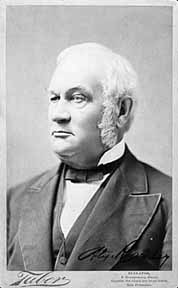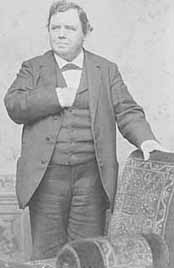Difference between revisions of "Alexander Ramsey House"
| Line 30: | Line 30: | ||
! | ! | ||
|- | |- | ||
| − | | This information came to light long after these men passed away. In the fall of 1976, a history professor from the University of Minnesota stumbled across the incriminating passage and found supporting evidence in a check signed by Ramsey—likely a response to blackmail.<small>(4)</small> The young Gay Rights movement seized this information and proclaimed Ramsey as an historic “Gay” figure in Minnesota History. Lucy Ann Lobdell became the 19th-century “Lesbian” counterpart to Ramsey; she was a cross-dressing wanderer who was ostracized and eventually spent her remaining days in a cave with another woman.<small>(5)</small> | + | | This information came to light long after these men passed away. In the fall of 1976, a history professor from the University of Minnesota stumbled across the incriminating passage and found supporting evidence in a check signed by Ramsey—likely a response to blackmail.<small>(4)</small> |
| + | |||
| + | |||
| + | The young Gay Rights movement seized this information and proclaimed Ramsey as an historic “Gay” figure in Minnesota History. Lucy Ann Lobdell became the 19th-century “Lesbian” counterpart to Ramsey; she was a cross-dressing wanderer who was ostracized and eventually spent her remaining days in a cave with another woman.<small>(5)</small> | ||
Revision as of 21:48, 26 March 2010
265 Exchange Street South, St. Paul (1860-Present)
| Alexander Ramsey in 1881. Courtesy of the Minnesota Historical Society. |
Few consider the complexities of Minnesota life in the 19th century—contrary to belief, the state only briefly flirted with Wild West aspirations and quickly adopted the intricacies of East Coast civilization. This was especially the case in the state’s capitol, St. Paul—dubbed “the last city of the east” by exaggerating newspapers. At the time, Minnesota’s newness inspired political dreams that often resulted in bitter partisanship.
|
Donnelly later surmised that Ramsey’s followers—Patrick Kelley and Michael Doran—were male prostitutes, or “bearded courtesans” who were pimped by railroad tycoon James J. Hill. (3)
| This information came to light long after these men passed away. In the fall of 1976, a history professor from the University of Minnesota stumbled across the incriminating passage and found supporting evidence in a check signed by Ramsey—likely a response to blackmail.(4)
|
Ignatius Donnelly ca. 1885. Courtesy of the Minnesota Historical Society. |
(1) Ridge, Martin. Ignatius Donnelly: The Portrait of a Politician. St. Paul: Minnesota Historical Society Press, 1961. Pages 28-30.
(2) “New Days for Gayness: A Chronology of Gay Progress” Twin Cities Pride Guide, 1977. Page 7.
(3)Nydahl, Theodore, ed. "The Diaries of Ignatius Donnelly: 1885: Page 31. Minnesota Historical Society: Ignatius Donnelly Diary Collection
(4) "New Days for Gayness," Ibid.
(5) "New Days for Gayness," Ibid.
Part of Minneapolis/St. Paul, MN: 100 Queer Places in Minnesota History, (1860-1969), (1969-2010)

